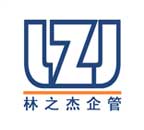The 2007 version of the OHSAS standard will differ from its processor as follows:
- The importance of "health" has now been given greater emphasis balanced with "safety".
- Focus on occupational safety, not getting distracted with assets, security, etc.
- The term “incident” is now being used as a reference instead of the term “accident”
- The inclusion of behavior, capabilities and other human factors as elements to be considered in the identification of hazards, risk assessment and determination of controls and finally in competence, training and awareness
- A new requirement has been introduced for the delegation of control as part of OHS planning
- Change Management is now more explicitly addressed
- A new clause on the "Evaluation of compliance" has been introduced, aligned with ISO 14001
- New requirements have been introduced for participation and consultation
- New requirements have been introduced for the investigation of incidents
- OHSAS 18001 now refers to itself as a standard, not a specification, or document, as in its earlier edition. This reflects the increasing adoption of OHSAS 18001 as the basis for national standards on occupational health and safety management systems.
- New definitions have been added, including major ones like "incidents", "risk", "risk assessment", and existing definitions revised
- The term "tolerable risk" has been replaced by the term "acceptable risk”
- The definition of the term "hazard" no longer refers to "damage to property or damage to the workplace environment". It is now considered that such "damage" is not directly related to occupational health and safety management, which is the purpose of this OHSAS Standard, and that it is included in the field of asset management. Instead, the risk of such "damage" having an effect on occupational health and safety should be identified through the organization's risk assessment process, and be controlled through the application of appropriate risk controls.
In summary, OHSAS 18001:2007 is more compatible with ISO 14001:2004 and ISO 9001:2000, embraces modern and proven concepts of occupational health and safety management and has had its elements and definitions better refined. |

